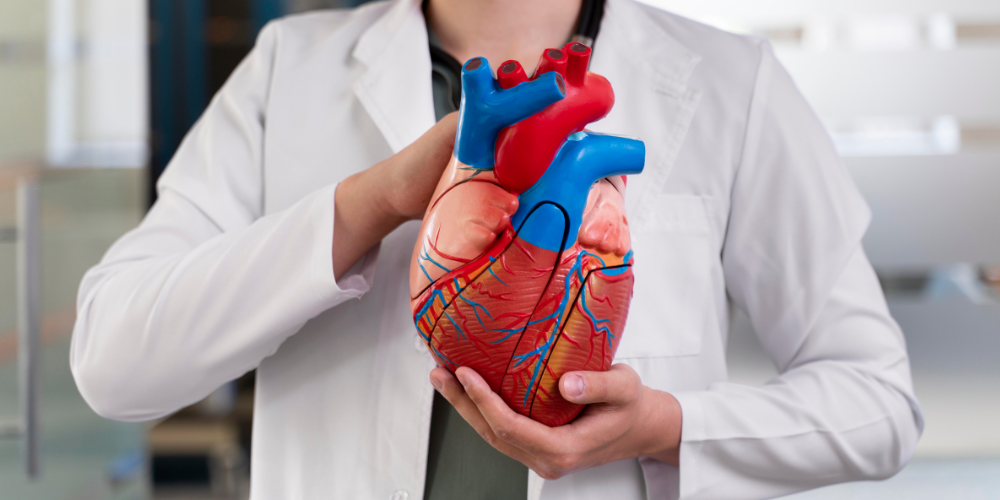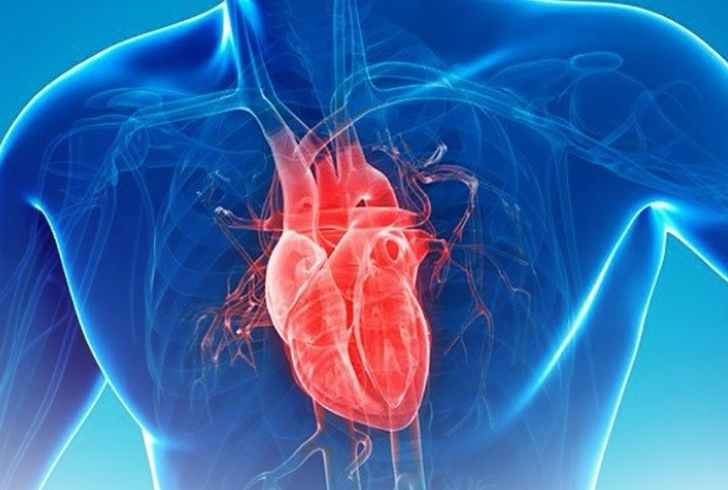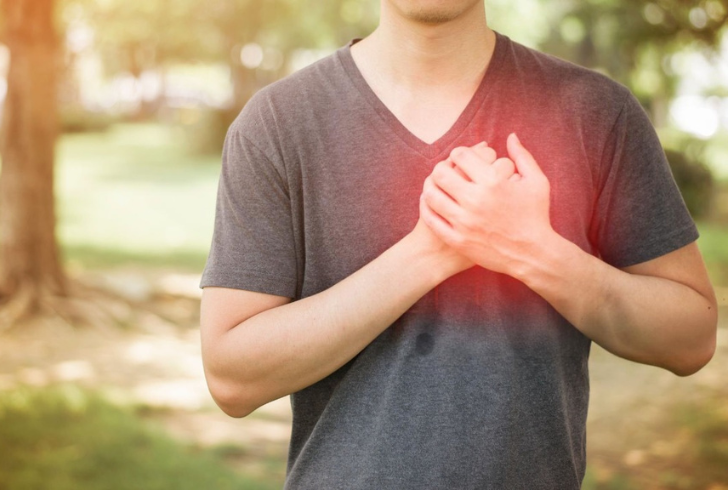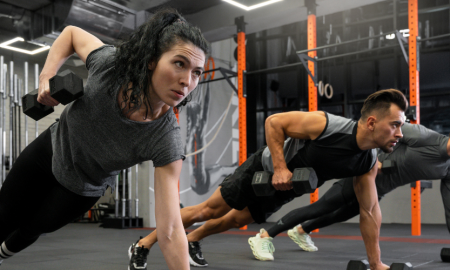
Why the Heart Is Slightly to the Left and Not Perfectly Centered

The heart is one of the most vital organs in the body, yet its placement often raises questions. Many assume it should be positioned directly in the center of the chest, but it actually leans slightly to the left. This arrangement is far from random—it’s a result of intricate developmental processes and the body’s need for efficient circulation.
Heart Position and Structure
The heart is largely central in relation to the head and torso and sits high in the chest between the lungs. However, because of its shape and the dominance of the left ventricle—which is responsible for pumping oxygen-rich blood throughout the body—about two-thirds of the heart extends to the left side of the midline.

Instagram | indiatodayne | The heart sits in the center of the chest, but its left ventricle causes it to extend mostly to the left.
This slight asymmetry begins in the earliest stages of embryonic development. The heart initially forms as a straight tube at the body’s center. Within a short period, it elongates rapidly, and because its ends remain fixed, it twists into a helical loop. This looping is not a flaw—it’s a functional design that ensures the heart’s chambers align correctly and improves pumping efficiency.
Developmental Mechanics
In early embryonic development, molecular signals act unevenly across the embryo, becoming stronger on one side than the other. This imbalance directs the heart tube to bend in a set direction. That bend:
Properly aligns atria and ventricles for efficient blood flow
Allows the heart to fold into a compact position within the chest
Boosts the pumping efficiency of the primitive, valveless heart
Comparative biology shows this looping pattern across chordates—from fish to mammals—evidence of a deeply conserved evolutionary solution.
Relationship With the Lungs
Positioned between the lungs, the heart is perfectly placed for rapid oxygen exchange. Blood that leaves the lungs only needs to travel a short distance before entering the left atrium, then the left ventricle, from where it’s pumped through the body. This close arrangement reduces energy loss and keeps circulation fast and efficient.
Because the heart is a muscle, it also takes priority in receiving oxygen-rich blood through the coronary arteries before other organs. The rib cage provides structural protection against impacts, shielding both the heart and lungs from everyday injuries.
Circulatory Efficiency

Freepik | The heart’s position and design help regulate blood pressure, which gravity makes higher in the lower body.
The heart’s position and structure help the body manage the effects of gravity on blood flow. Blood pressure isn’t the same throughout the body—it’s usually higher at the ankles than at the head because of hydrostatic pressure. To keep this in balance, the body uses a few built-in systems:
1. Baroreceptors near the heart sense drops in blood pressure. In response, they increase the heart rate and strengthen contractions.
2. One-way valves in the veins of the legs stop blood from pooling in the lower limbs.
3. Muscle movements in the legs push blood upward toward the heart.
These systems work together. Without them, even simple changes in posture could interrupt normal circulation.
The Efficiency of an Asymmetric Pump
The heart’s tilt and rotation resemble the layout of mechanical systems—such as car engines—where performance matters more than symmetry. In the embryo, looping gives the primitive heart extra pumping force and steady flow, a principle confirmed in physical models of development.
By staying compact yet powerful, it can keep vital systems stable and responsive.
Why the Heart’s Position Works Best
Its position reflects millions of years of evolutionary problem-solving, a placement that maximizes circulation efficiency across the entire body. Its slight leftward orientation, early developmental looping, and close proximity to the lungs all serve a single purpose—delivering oxygen-rich blood to the body as effectively as possible.
Far from being a misplaced organ, the heart sits exactly where it functions best, proving that in anatomy, performance often outweighs perfect symmetry.
More in Body
-
`
Is ‘Nature’s Ozempic’ Barberine Really Good For Weight Loss?
Weight loss is big business, and right now, all eyes are on berberine, a plant compound people are calling “nature’s Ozempic.”...
September 27, 2025 -
`
How the ‘Ozempic Effect’ Is Changing Clothing Sizes Across the U.S.
Retailers across the U.S. are noticing a striking change on their racks. Plus-size apparel, once in constant demand, is showing up...
September 27, 2025 -
`
Fat Jabs May Cure Cocaine Addiction and Boost Heart Health, New Study Finds
What if the same jab that helps you lose weight could also help you kick a cocaine habit? Sounds wild, but...
September 21, 2025 -
`
Dwayne Johnson Shocks Fans With Dramatic Weight Loss Transformation
Dwayne “The Rock” Johnson stunned the crowd at the 2025 Venice Film Festival with a slimmer look that set social media...
September 20, 2025 -
`
Dwayne ‘The Rock’ Johnson Stuns Fans With Slimmed-Down MMA Fighter Look
Dwayne ‘The Rock’ Johnson isn’t just flexing muscles anymore. In “The Smashing Machine,” Dwayne Johnson strips down the bulk, sheds his...
September 13, 2025 -
`
Here’s How Fat-Blocking Green Tea Microbeads May Aid Weight Loss
Scientists are exploring an innovative way to reduce fat absorption in the body—tiny edible beads made with green tea, vitamin E,...
September 12, 2025 -
`
Ozzy Osbourne’s Most Shocking and Beloved Pop Culture Moments
Few figures in rock history have carved out a legacy as vivid and unpredictable as Ozzy Osbourne. Beyond his groundbreaking work...
August 10, 2025 -
`
Are Mono Diets Worth It – or Just a Dangerous Trend?
As summer brings on the pressure to slim down fast, the internet lights up with diet trends promising instant results. One...
August 3, 2025 -
`
Why Motivation Is Essential for Sustainable Fitness Success
Motivation isn’t something that shows up when it’s convenient—it’s something that needs to be built, shaped, and sustained. Many people struggling...
July 27, 2025










You must be logged in to post a comment Login